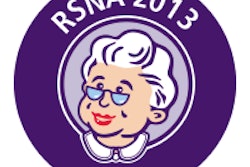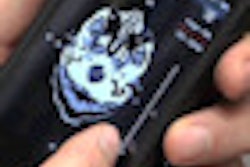Clinicians can access medical images much faster using mobile image-viewing software on Apple iPads without sacrificing diagnostic confidence or ease of use, compared with the use of traditional desktop-based software, according to researchers from the Mayo Clinic in Scottsdale, AZ.
After comparing mobile image-viewing software for nondiagnostic image review with a commercial PACS workstation and an image viewer developed in-house for image review on desktop computers, the Mayo team found that clinicians could access images up to six times faster with the mobile viewer. Clinician diagnostic confidence and ease-of-use ratings were also comparable to or better than those of the other two systems.
"[The mobile image-viewing software] can improve the speed at which clinical decisions can be made that involve imaging, which can potentially improve patient care," author Dr. Amy Hara, a professor of radiology at the Mayo School of Medicine, told AuntMinnie.com.
Limited access to images
While accurate and rapid interpretation of medical images is critical after hours and in acute-care settings, this task is often hampered by limited access outside the healthcare facility, according to the researchers, who presented their research last month at the Medicine 2.0 World Congress in London.
Mayo Clinic Arizona has been using the ResolutionMD mobile viewer (Calgary Scientific) for several years for its telestroke program, and the researchers wanted to compare the mobile viewer with two other image-viewing systems used at the institution to determine any advantages and/or disadvantages, Hara said.
The team recruited 20 clinicians, including several radiologists, to participate in the study. Each was furnished with a third-generation Apple iPad with 32 MB of storage, 3G or 4G cellular networking, and an installed ResolutionMD application.
The participants also had access to two desktop applications: Centricity PACS (GE Healthcare) on high-resolution displays and Qreads, a clinical image viewer developed in-house at the Mayo Clinic for Windows PCs. While the radiologists involved in the study could remotely access Centricity from home workstations, all participants could remotely access Qreads via screen-sharing software.
The researchers performed surveys before and also 30 days after deployment of the mobile viewer. Study participants collected data for seven consecutive days for each time they accessed an image, noting the time, location, device used, access type, image-viewing system used, time to view the first image, and technical issues. They also rated diagnostic confidence and ease of use for the systems on a scale from 0 (worst) to 4 (excellent).
Seventeen clinicians -- seven radiologists, four surgeons, four neurologists, and two oncologists -- and two physician assistants ultimately provided data on a total of 565 image-viewing events. The images in the study were primarily CT and MR images of the head, chest, and abdomen, as well as postoperative plain films of the bone, Hara said.
The mobile software was used primarily for image review in the study. All diagnostic interpretations were performed on the PACS software.
Of the 565 image-viewing events, 269 took place prior to deployment of the mobile viewer and 296 were after deployment. Overall, 91 image-viewing events took place on the PACS, while 259 were on the mobile viewer and 215 were on the clinical image viewer.
The radiologists in the study recorded system use only when on-call; therefore, they produced 83% of their data after hours and when outside the hospital. Nonradiologists mostly (68%) accessed images during work hours while in the hospital.
Comparable results
All three software applications had diagnostic confidence scores of good to excellent (3.7, 3.8, and 3.4 for the mobile viewer, PACS, and Qreads, respectively), according to the researchers. The diagnostic confidence score for Qreads differed significantly from the mobile viewer and PACS (p < 0.05)
Mobile vs. workstation-based image viewers
|
"The mobile viewer provided the fastest time to first image compared to other nonmobile viewers," Hara said. "It also had better or comparable diagnostic confidence, ease of use, and less technical issues compared to the other viewers."
Only the Qreads score differed on a statistically significant basis for the ease-of-use ratings (p < 0.001). The differences in access time between the mobile image viewer and the other two viewing systems were statistically significant for both nonradiologists and radiologists (p < 0.001).
After the study, 85% of participants expressed a moderate to high desire for permanent implementation of the mobile viewer. The institution has continued to use the mobile viewer clinically, Hara said.
Challenges
One challenge with the mobile viewer was the unavailability of radiology reports with the image. However, this was due to an internal permission problem, not the software, Hara explained.
Exams in cine mode can also be difficult to view, she said.
"Exams with multiple series such as nuclear medicine studies or complex MR cases can sometimes be challenging to evaluate on mobile devices," Hara said. "Noncine exams with fewer than 100 images in general are better than larger-volume exams."
The Mayo Clinic Arizona is now expanding the use of ResolutionMD throughout other departments. Next, the researchers would like to test an on-call software feature that allows virtual collaboration between multiple users.



















